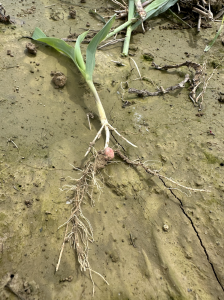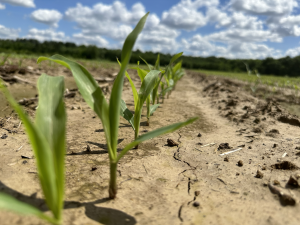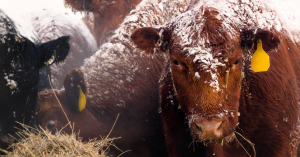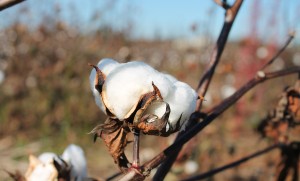“Anticipation” is a famous song from Carly Simon (which also became the advertising anthem for Heinz ketchup). But it could also be the theme for how farmers feel from the moment they drop their planter. My first year of farming on my own, I waited over three nail-biting weeks for my soybeans to emerge. This year, my corn shot up in five days. So once seed goes in the ground, how long does it take to peak out? That can vary a lot, depending on the crop, soil conditions, moisture and the temperature. For starters, corn needs a 50-degree soil temperature and must absorb 30% of its weight in moisture to germinate (these amounts will vary greatly among crops). While we humans think in terms of days, plants think in terms of heat. That’s calculated by Growing Degree Units (GDU). GDUs are calculated by adding the day’s high and low temperatures, dividing by 2, and subtracting 50 (for calculating purposes, 86 degrees is the maximum, 50 degrees is the minimum high and low value). Corn needs about 120 GDUs to emerge. The day I planted in west Tennessee, we hit 86 degrees for a high, and 64 for a low. That gets us 25 GDUs (I also planted in moisture, and we received rain the day after planting). So at that pace, you’d see corn up in about 5 days, which it did. That same day, at my home farm in Galesburg, IL, the high was 74 and the low 52, resulting in 13 GDUs. At this rate, you’re looking at about double that time, 10 days until emergence. GDUs also determine when plants mature. This varies greatly among specific hybrids and varieties. The corn hybrid I’m using on my farm, Agri-Gold 6659, will reach maturity with 2,850 GDUs.
May is National Strawberry Month. This delectable fruit is native to North America, and the USA is the world’s top producer, growing over 29,000 pounds annually. California grows 90% of the USA’s commercial production. Once established, this perennial crop reproduces via seeds and runners (creeping stems that establish their own roots) and strawberry patches can be maintained well after the original parent plants have perished. Strawberries are technically self-pollinating, and each flower contains male and female parts. But left to their own devices, many berries will become odd shaped. So they need bees to optimize their size and appearance.
The biostimulant effect of Huma products is on full display in my corn field. These photos were taken just nine days after planting. During that time, we had 224.5 GDUs and two inches of rain. Sure, the quick emergence and 4” tall height is eye-popping. But even more impressive is what’s going on below ground. Check out the vigorous root growth. Not just the length of the roots – which surpasses the above-ground growth – but the thickness and development of the root mass.


Related Posts

This Week in Ag #15
“Your rows sure are straight.” Those may have been the most pride-filling words I ever heard. They were first spoken to me by one of my landlords, Orville Larson, the spring after my dad passed away and all farming operations fell entirely on me. Orville made a habit of driving out to his farm to see

This Week in Ag #48
The popular TV series Yellowstone, along with the western lifestyle craze, has certainly romanticized ranching. It seems like everyone wants to be a rancher, until there’s real-world ranching stuff to do. This week’s bone-chilling Midwestern weather brings back memories. Notice I didn’t say fond memories. When you have livestock, they require care every day. Utility tractors

This Week in Ag #34
Earl Butz, one of the most famous and popular US Secretaries of Agriculture, once told me that a key competitive advantage for US farmers in the global marketplace is our built-in natural infrastructure. Our Great Lakes and river system is perfectly designed to transport grain efficiently. The Mississippi River is the backbone of our agricultural transportation system: 60% of all grain exported from the USA is shipped by barge down the Mighty Mississippi.

